When nights dip down into the 40’s, it’s broth season in Virginia. At farmers’ market we sell a lot of our soup bones, but busy customers like to buy it ready-made. In our archives you will find bone broth comes up a lot. It’s the base of many of our delicious soups like Granny’s Beef Barley Soup. There’s many variations on how to make bone broth. The easiest option is to use an Instant Pot or multi-cooker. Below is the recipe we use to make Smith Meadows Beef Bone Broth in a 14 quart pot, which yields 37 pints. You may want to make a smaller batch at home. We used 3 (3 pound) bags of our beef soup bones for this recipe.
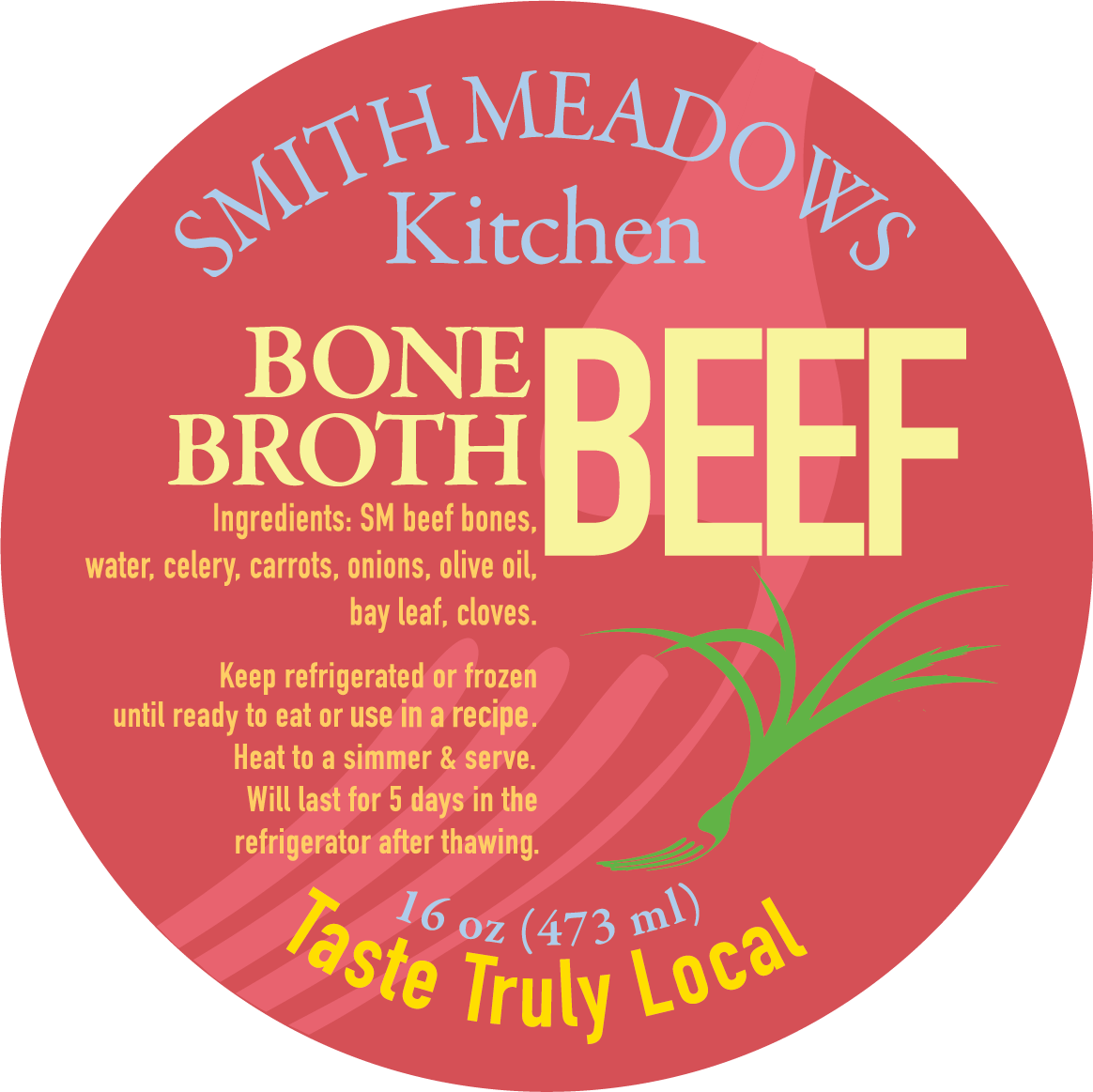
10-11 lbs of a mix of soup bones and marrow bones
2 large carrots (peel & cut into large pieces 4-5 more carrots and set aside for next 2 batches)
2-3 large celery ribs (wash and cut into large pieces 4-5 more ribs of celery for next 2 batches)
1 large onion peeled and cut into 2 halves (peel and cut into half 2 more large onions for the next two batches)
10 cloves (spear 5 cloves into each half of the onion)
5 large bay leaves
½ cup white wine
6-6.5 qts water (or enough to cover the bones by two inches or reach the fill line of the 14 qt Pressure Cooker/Multicooker)
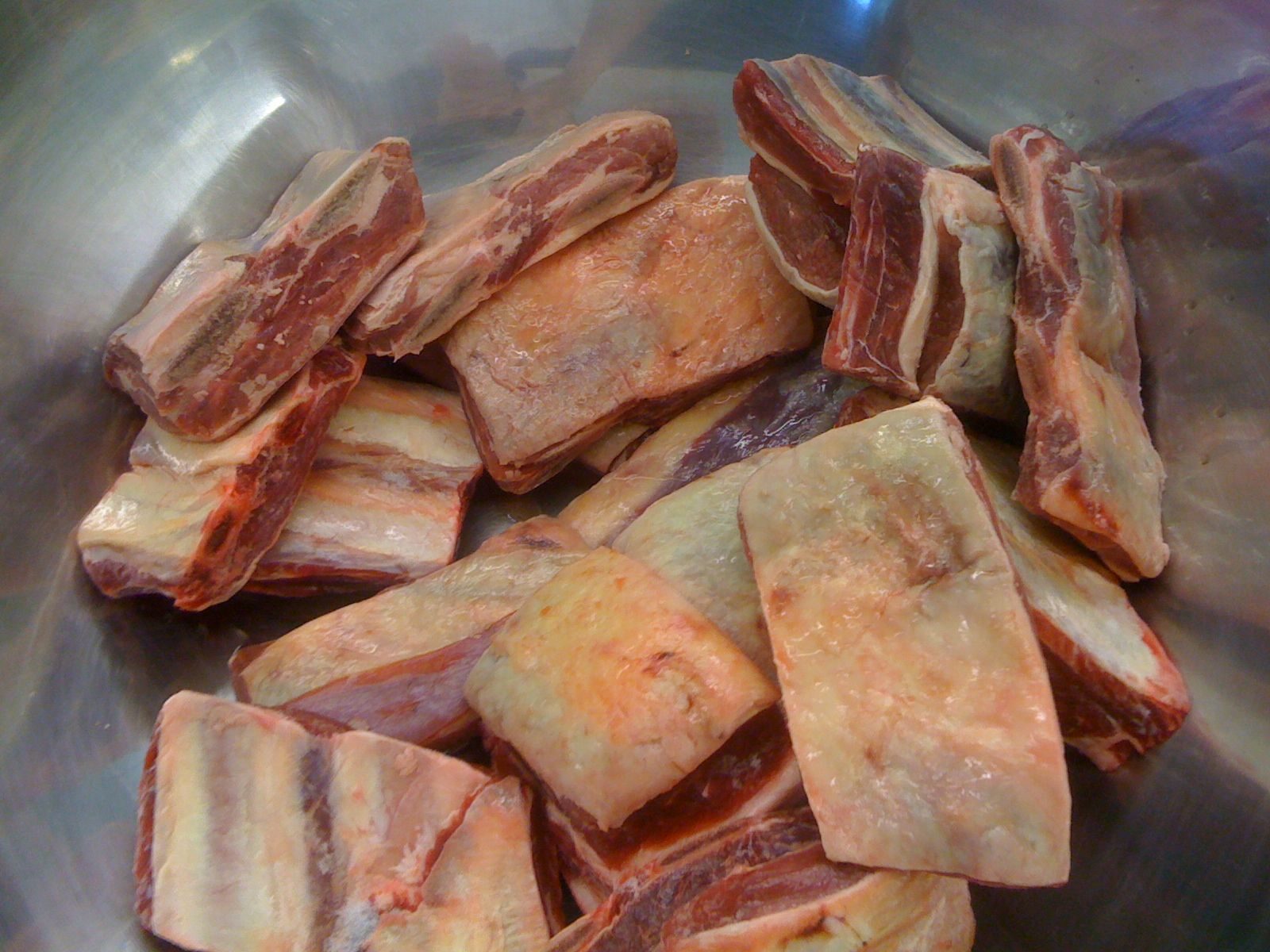
- Unwrap all the bones and set them in a large stainless bowl big enough to contain them all. Set the 14 qt pot to sautée. Brown the bones in batches so that all sides are brown. You can set the browned bones into the same bowl with the raw bones (no need to use another bowl). Prepare your veggies while the bones brown.
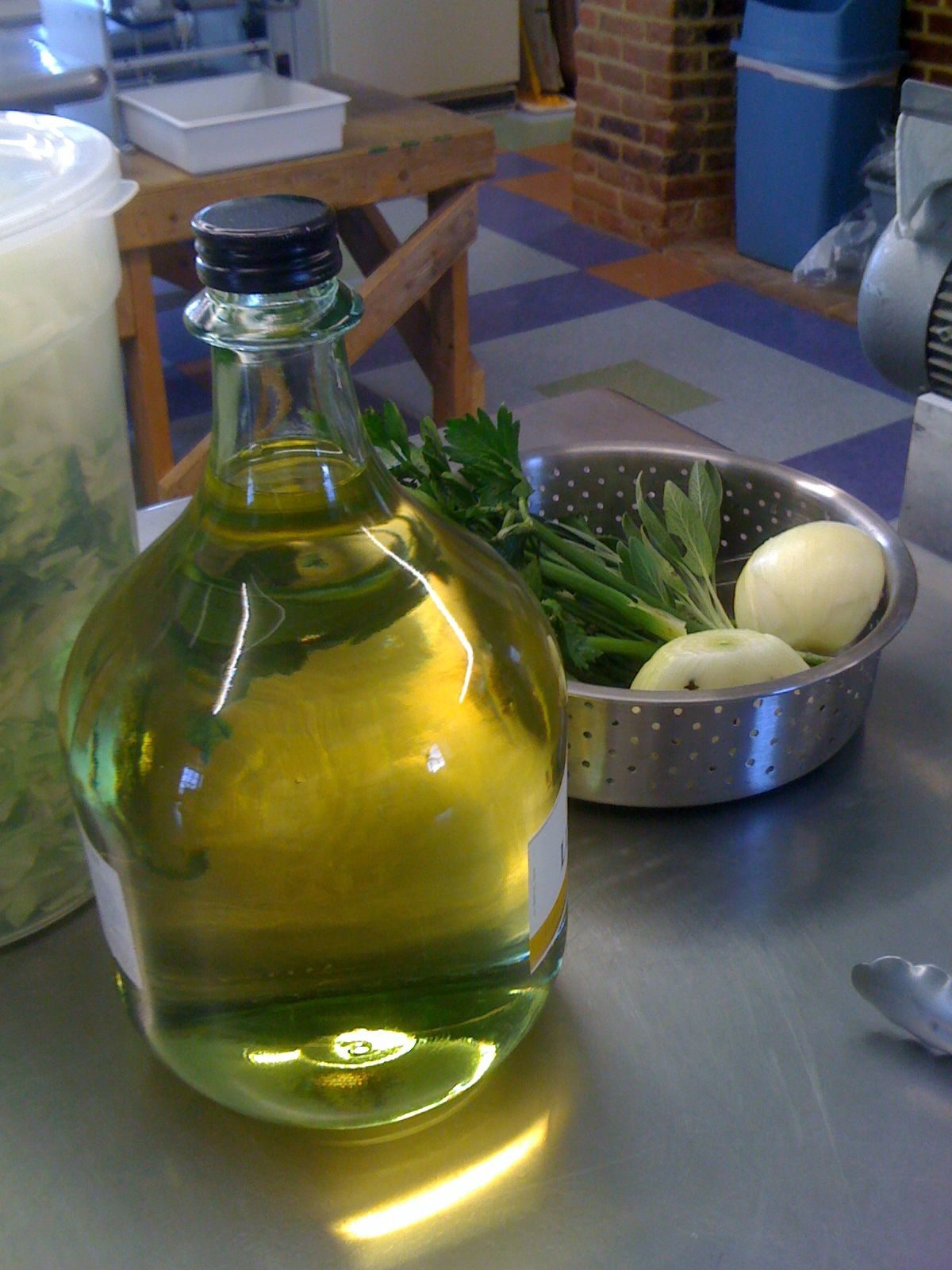
- When all the bones are browned, return them to the pot and press cancel. Press pressure time (-) once to get to 2 hours (2:00:00)
- Add the vegetables, cloves, bay leaves, wine. Fill with water until the bones are covered by two inches or the fill line has been reached. Lock the lid into place and play with the valve until full pressure (10.5psi) is reached on the pressure gauge.
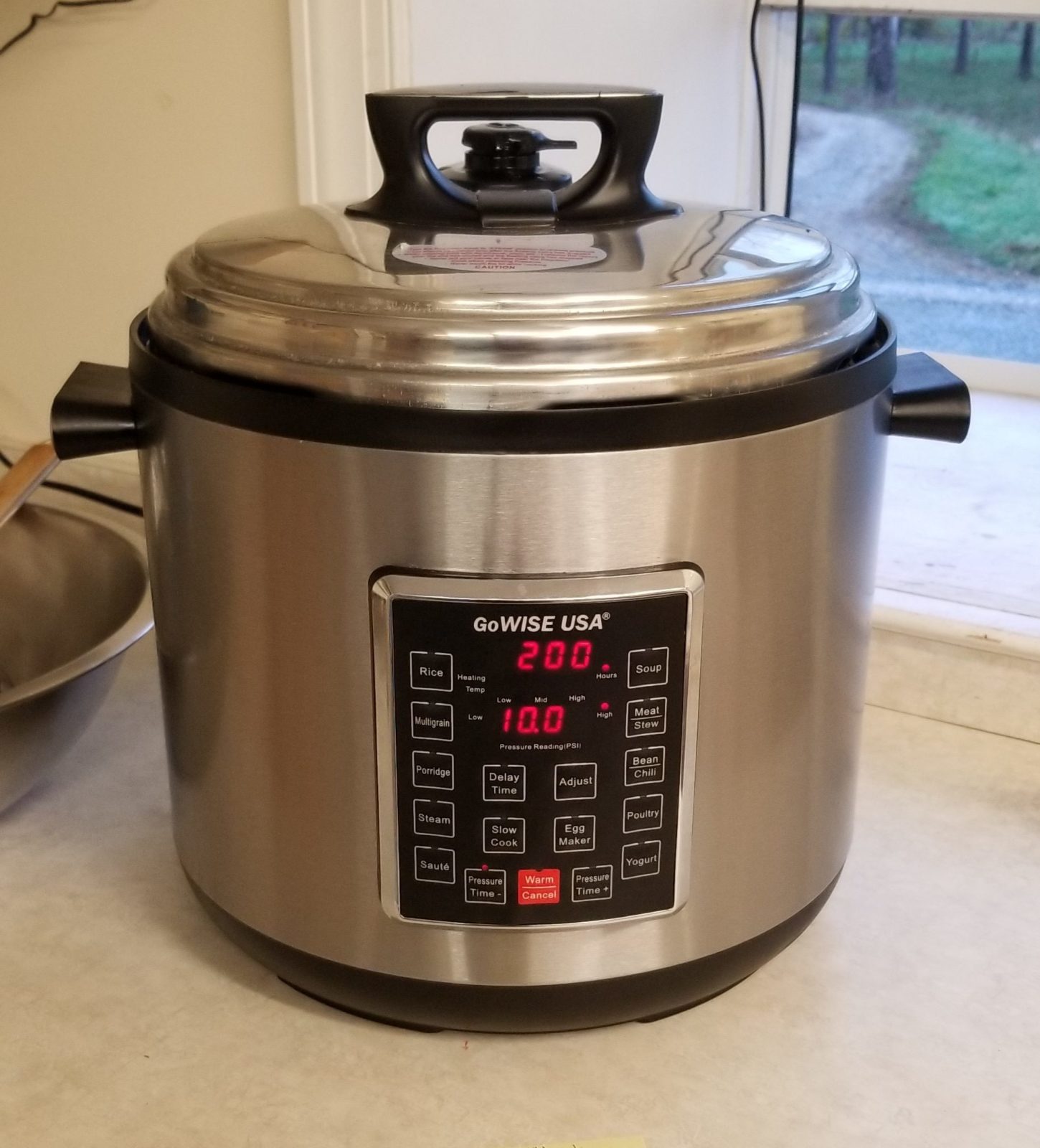
- After 2 hours, press cancel. Reset the pot for another 2 hours. When time is up let the pressure release naturally by pressing cancel and letting the pot sit for 30 minutes or so.
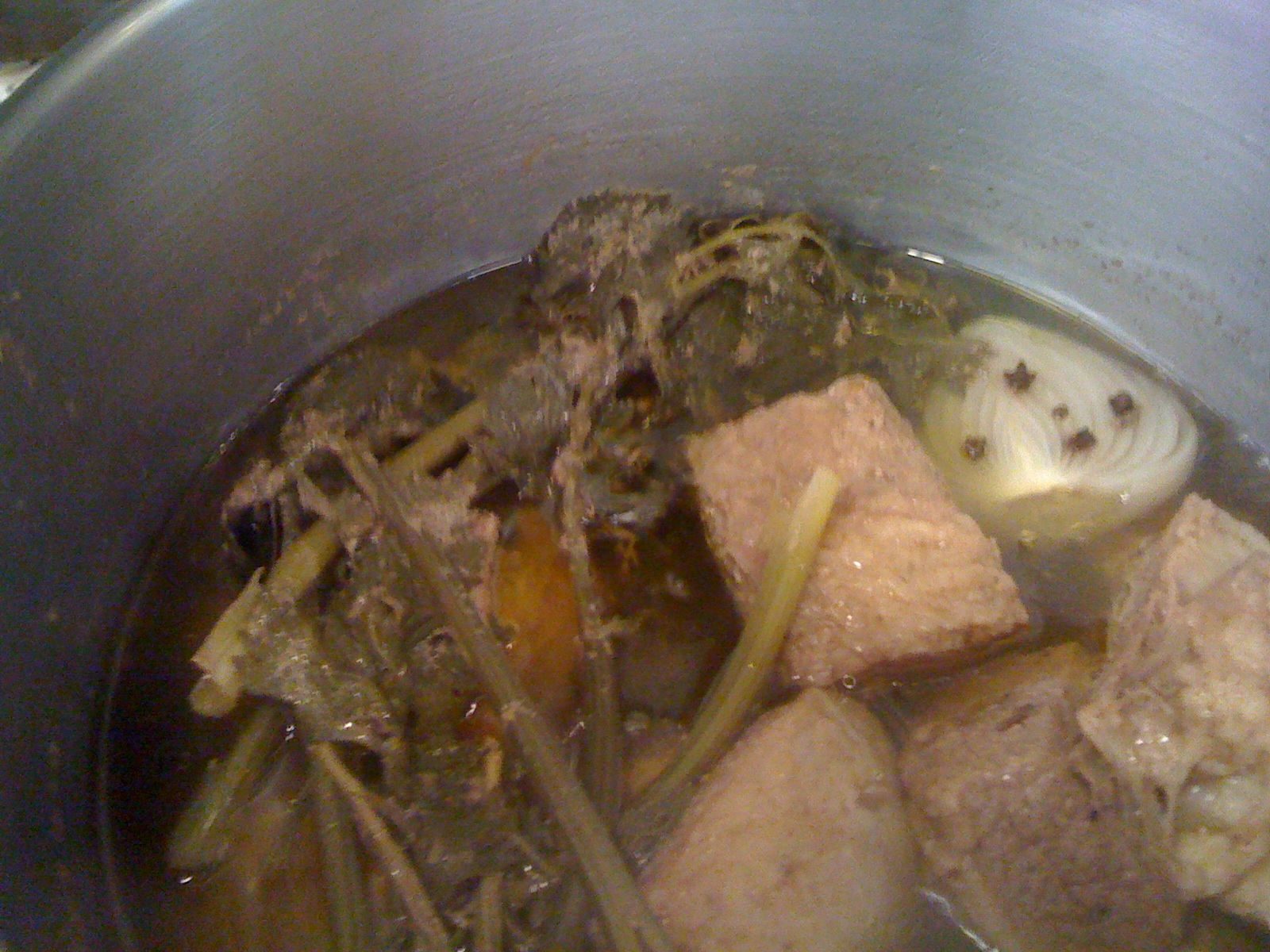
- Use tongs to remove the bones and set them into a bowl to cool. Strain the liquid into 2 (8qt) tubs. Return any gelatinous or large fatty pieces to the bowl of bones. Cool the strained bone broth in an ice bath in the sink with ½ large bag of ice and enough water to rise to the level of liquid in the tubs.
- Return the bones & gelatinous bits into to the pot. Add the same amount of veggies, bay leaves, cloves, wine and water. Repeat the Cooking Process (C-E) TWO MORE TIMES.
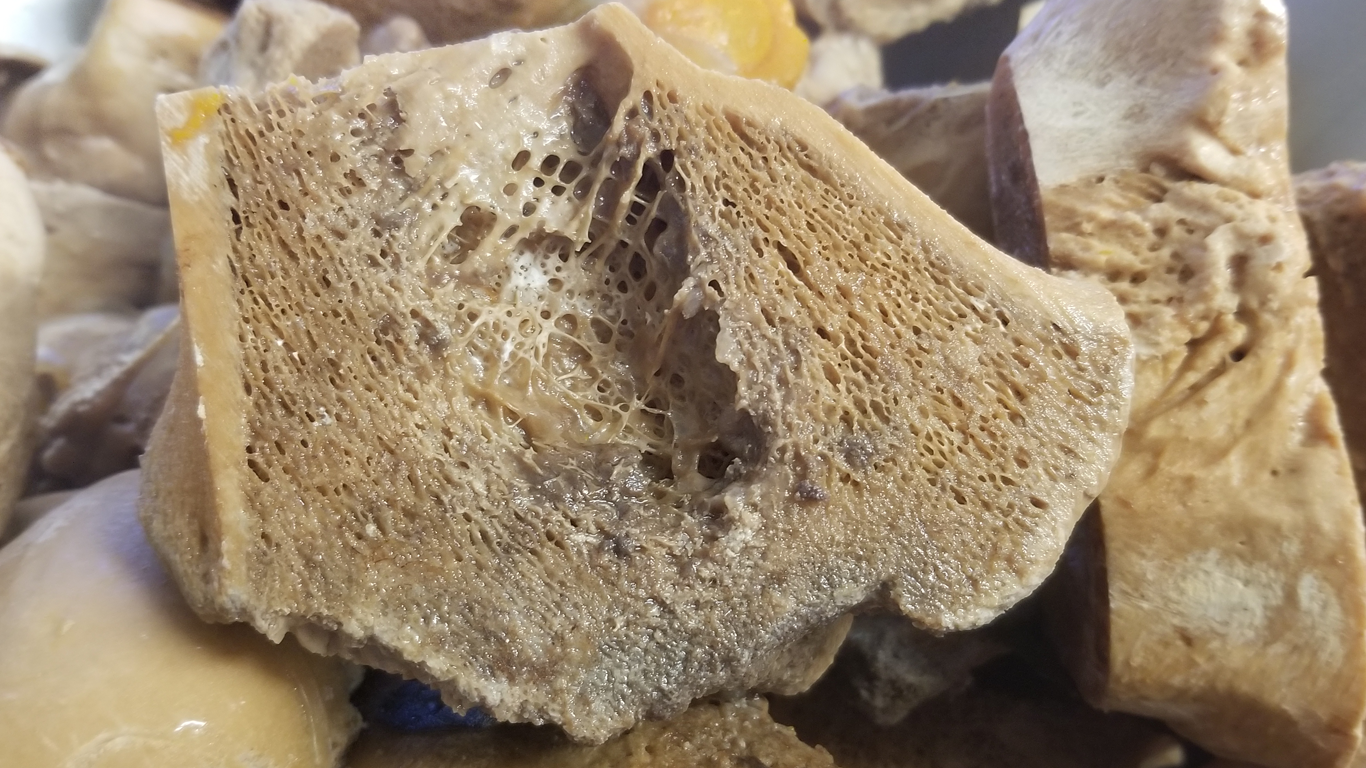
You can cook soup bones several times. I’ve read blogs that suggest you can re-cook soup bones up to 10 times. At Smith Meadows we make our bone broth dense. As you can see on the third batch, the bones already begin to fall
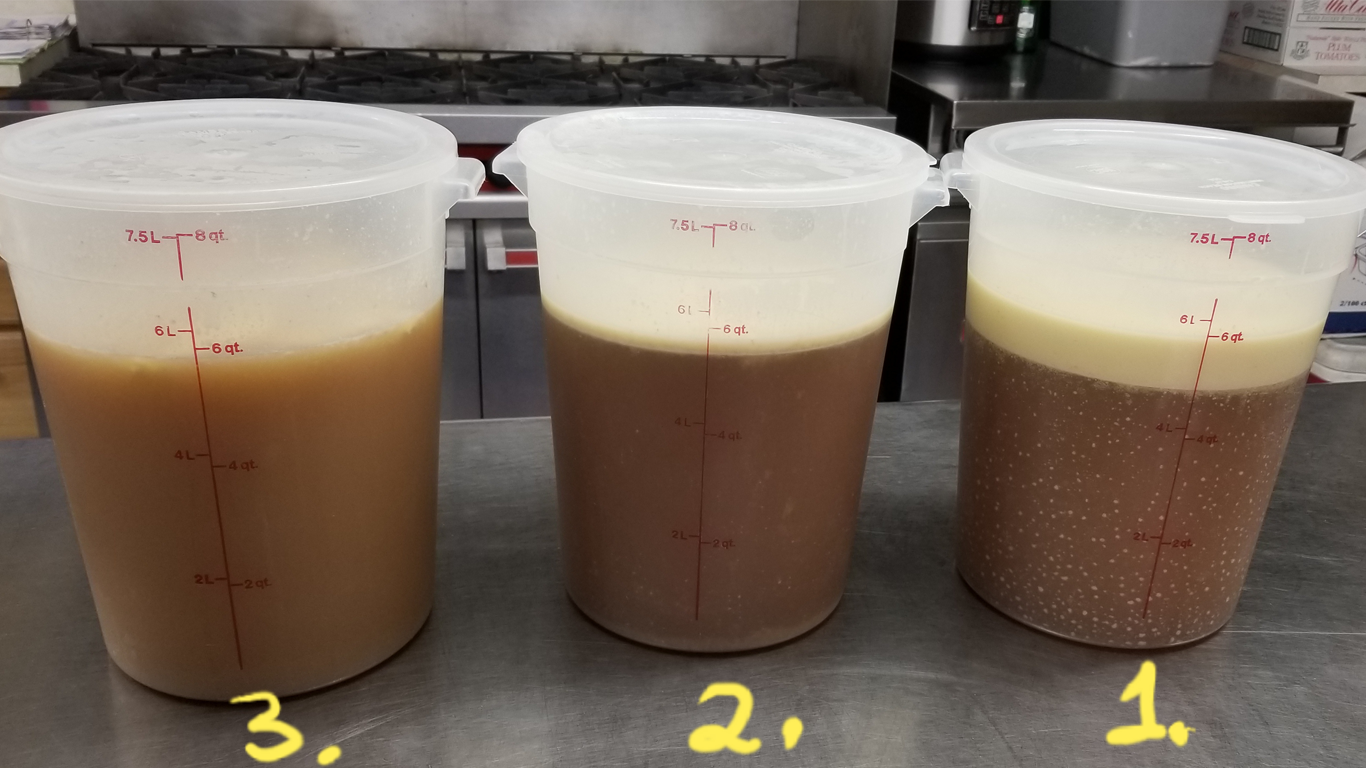
A comparison of the three batches shows a decrease in the amount of fat. There is also a decrease in the amount of gelatin each time the bones are cooked.
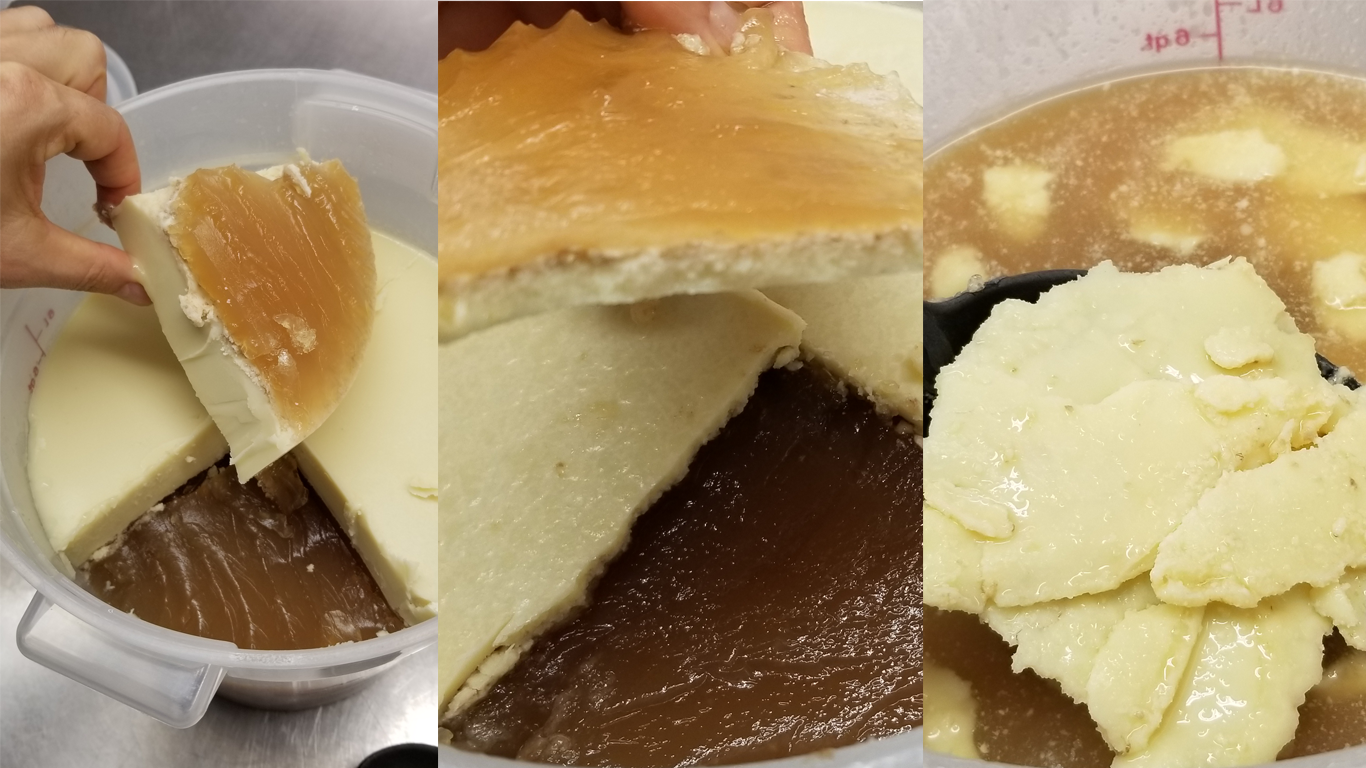
Once all the batches of broth have been cooled, carefully cut the thick layer of fat into 6 wedges like a pie. Remove the fat by hand and place into storage container for the fridge or freezer.
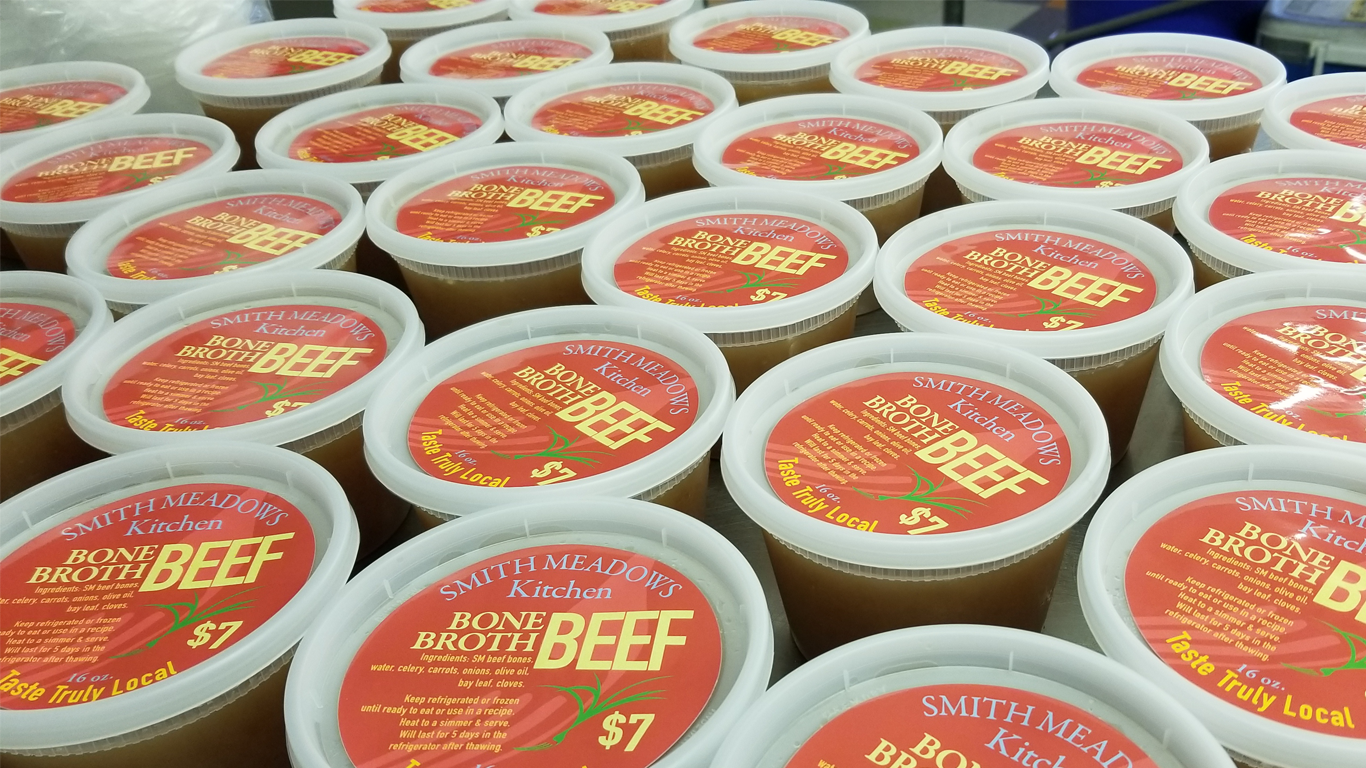
Combine all the batches of cooled broth into a large bowl. Ladle into containers. Making 37 pints of broth start to finish is a 10-14 hour process (prepping, cooking, cooling, cleaning and packaging). Smaller batches can be done in a crock pot, but your cooking time will increase from 4 to 24 hours, and the liquid will significantly reduce. This method saves a lot of time, and energy.
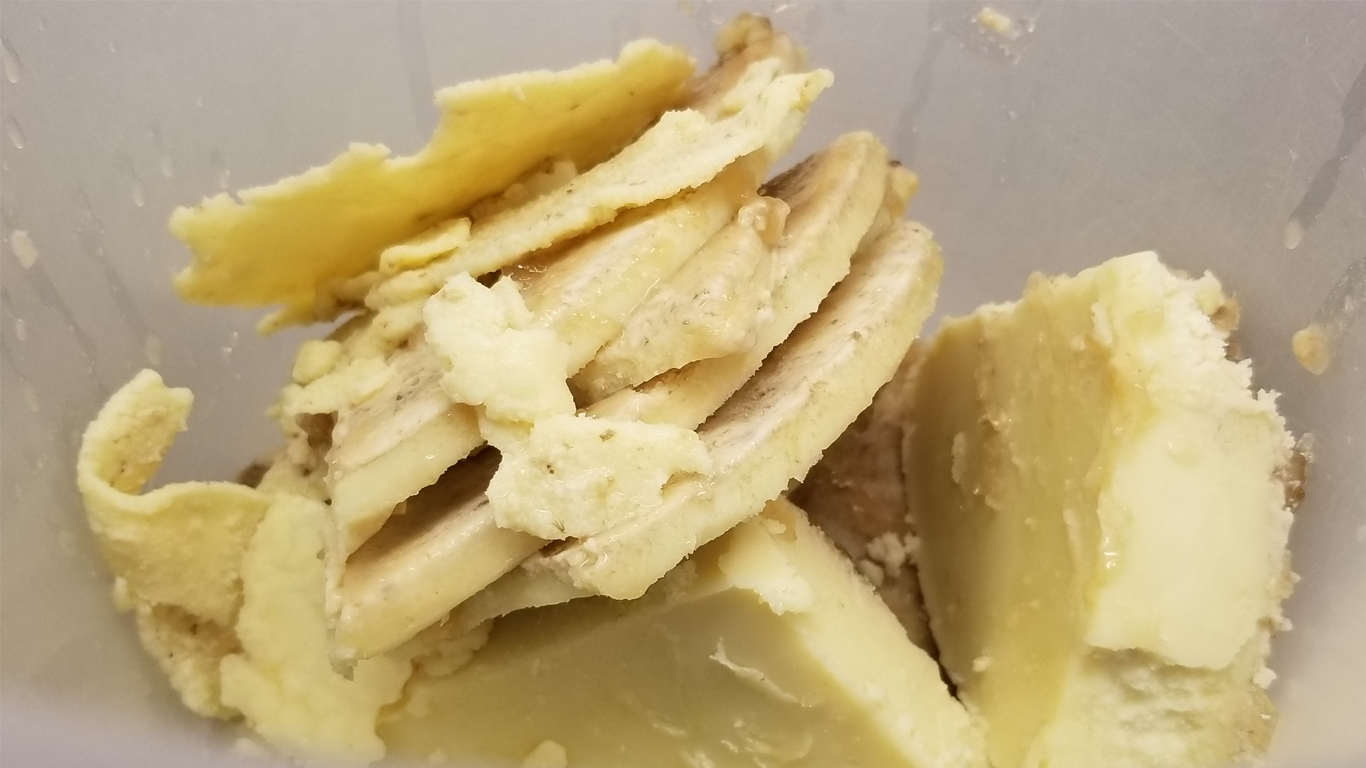
There are many benefits to drinking and cooking with bone broth. Wether you buy ready-made bone broth, or make your own, you will notice a difference. If you do make broth at home, you will have rendered beef tallow that can be used in other recipes, or as the base ingredient to other hand made products like soap and candles.




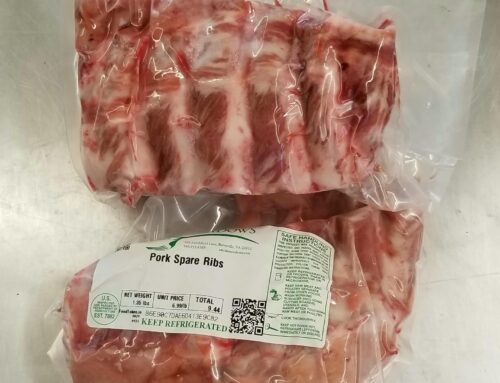
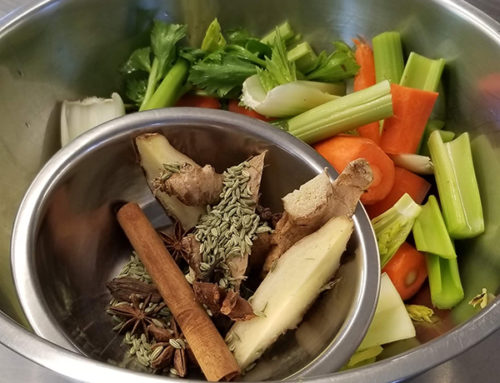
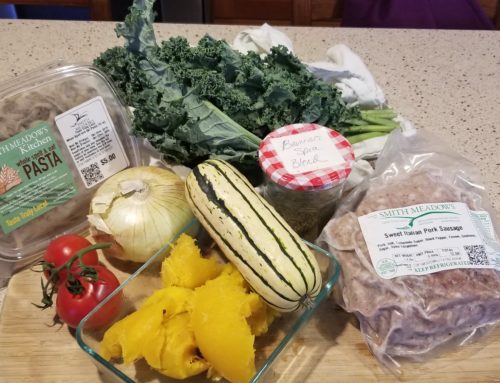
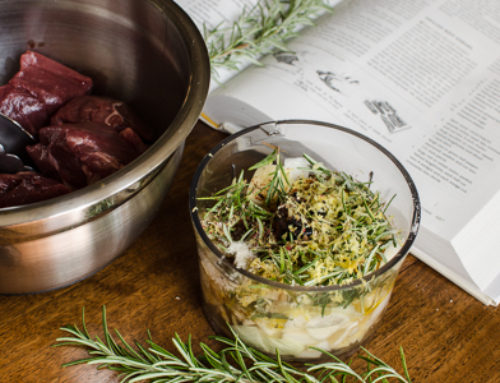
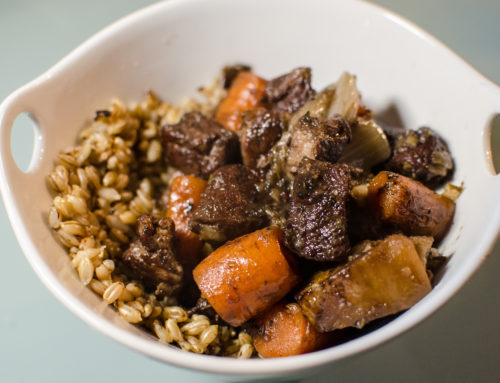
Leave a Reply